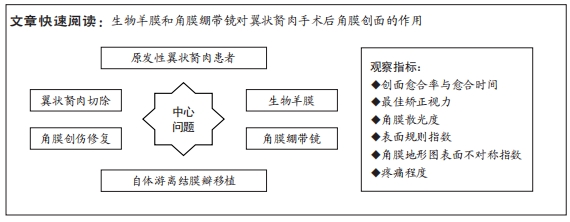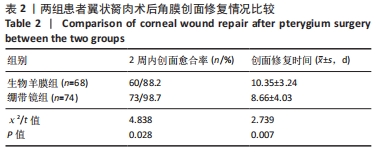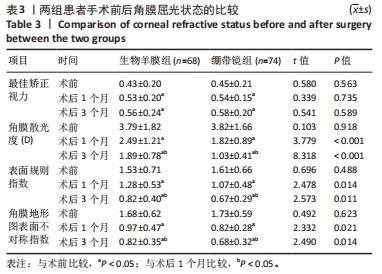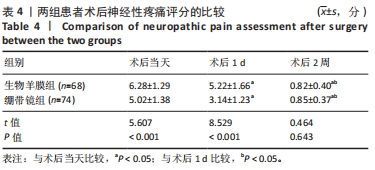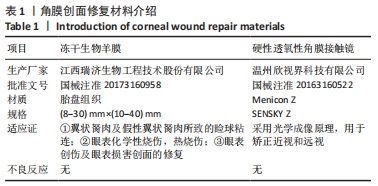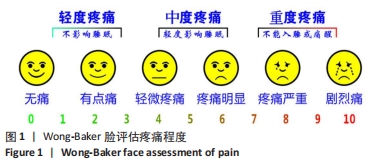[1] GHIASIAN L, SAMAVAT B, HADI Y, et al. Recurrent Pterygium: A Review. J Curr Ophthalmol. 2022;33(4):367-378.
[2] ROKOHL AC, HEINDL LM, CURSIEFEN C. Pterygium: pathogenesis, diagnosis and treatment. Ophthalmologe. 2021;118(7):749-763.
[3] 钱丽君,周桂贞,朱苏宁,等.揿针对翼状胬肉切除术后患者疼痛及泪膜稳定性的影响[J].中国针灸,2019,39(3):267-270.
[4] 于静,冯珺,接英,等.改良的翼状胬肉切除联合自体结膜和羊膜移植术及干扰素滴眼液治疗原发性翼状胬肉的初步疗效观察[J].中华眼科杂志,2020,56(10):768-773.
[5] 韦柳丹,翟建伟,唐作翼,等.角膜绷带镜治疗翼状胬肉切除术后角膜溃疡7例效果分析[J].广西医学,2018,40(4):466-467,476.
[6] 马科,徐亮,张士元,等.北京特定地区翼状胬肉患病率的流行病学调查[J].中华眼科杂志,2005,41(1):67-68.
[7] FELEMBAN OM, ALSHAMRANI RM, ALJEDDAWI DH, et al. Effect of virtual reality distraction on pain and anxiety during infiltration anesthesia in pediatric patients: a randomized clinical trial. BMC Oral Health. 2021;21(1):321.
[8] AKBARI M. Update on overview of pterygium and its surgical management. J Popul Ther Clin Pharmacol. 2022;29(4):e30-e45.
[9] LAI CC, TSENG SH, HSU SM, et al. Conjunctival Expression of Toll-Like Receptor 3 Plays a Pathogenic Role in the Formation of Ultraviolet Light-Induced Pterygium. Invest Ophthalmol Vis Sci. 2021;62(10):6.
[10] ZHU C, WEISS M, SCRIBBICK FW, et al. Occurrence of Occult Neoplasia in Pterygium Specimens Among Hispanic and Non-Hispanic Patients. Curr Eye Res. 2022;47(7):978-981.
[11] 吴雪梅,吴沂旎.翼状胬肉对人工晶状体度数测算的影响[J].中国现代医学杂志,2021,31(2):87-91.
[12] SHAHRAKI T, ARABI A, FEIZI S. Pterygium: an update on pathophysiology, clinical features, and management. Ther Adv Ophthalmol. 2021;13: 25158414211020152.
[13] HE S, WU Z. Biomarkers in the Occurrence and Development of Pterygium. Ophthalmic Res. 2022;65(5):481-492.
[14] 承伟,浦利军,徐玉莲,等.钝性分离联合成体干细胞结膜瓣移植治疗复发性翼状胬肉患者的临床疗效[J].眼科新进展,2020,40(9): 853-856.
[15] 熊毅,杨森,唐建明.生物羊膜和角膜绷带镜作为辅助材料用于治疗翼状胬肉的临床效果对比分析[J].眼科新进展,2018,38(4):378-381.
[16] ZEMANOVÁ M, PACASOVÁ R, ŠUSTÁČKOVÁ J, et al. Amniotic membrane transplantation at the department of ophthalmology of the university hospital brno. Cesk Slov Oftalmol. 2021;77(2):62-71.
[17] YANG PJ, YUAN WX, LIU J, et al. Biological characterization of human amniotic epithelial cells in a serum-free system and their safety evaluation. Acta Pharmacol Sin. 2018;39(8):1305-1316.
[18] WANG Y, SHEN F, SUN W, et al. Bandage contact lens soaked in 0.1% diclofenac to relieve early postoperative pain and foreign body sensation after transepithelial photorefractive keratectomy. Eur J Ophthalmol. 2022;32(6):3321-3327.
[19] WANG Y, SHEN F, SUN W, et al. Bandage contact lens soaked in 0.1% diclofenac to relieve early postoperative pain and foreign body sensation after transepithelial photorefractive keratectomy. Eur J Ophthalmol. 2022;32(6):3321-3327.
[20] 郝兆芹,马强,王小东,等.角膜绷带镜对生物工程角膜移植术后的临床治疗作用[J].实用医学杂志,2019,35(18):2900-2904.
[21] 彭荣梅,孙彬佳,肖格格,等.角膜内皮移植术后早期玻璃酸钠对泪膜及角膜上皮细胞再生的作用[J].眼科新进展,2020,40(6):542-546.
[22] CHENG J, ZHAI HL, WANG JY, et al. Surgical treatment of keratoglobus: key techniques of bridge-shaped flap penetrating keratoplasty and whole lamellar keratoplasty with corneoscleral limbal. Zhonghua Yan Ke Za Zhi. 2019;55(12):916-922.
[23] QIU X, SHI Y, HAN X, et al. Toric Intraocular Lens Implantation in the Correction of Moderate-To-High Corneal Astigmatism in Cataract Patients: Clinical Efficacy and Safety. J Ophthalmol. 2021;2021:5960328.
[24] 郑祥丽,徐颖.角膜塑形镜对青少年近视角膜透明度的影响远期随访研究[J].中国斜视与小儿眼科杂志,2020,28(4):17-20.
[25] POPA AV, KEE CS, STELL WK. Retinal control of lens-induced astigmatism in chicks. Exp Eye Res. 2020;194:108000.
|
